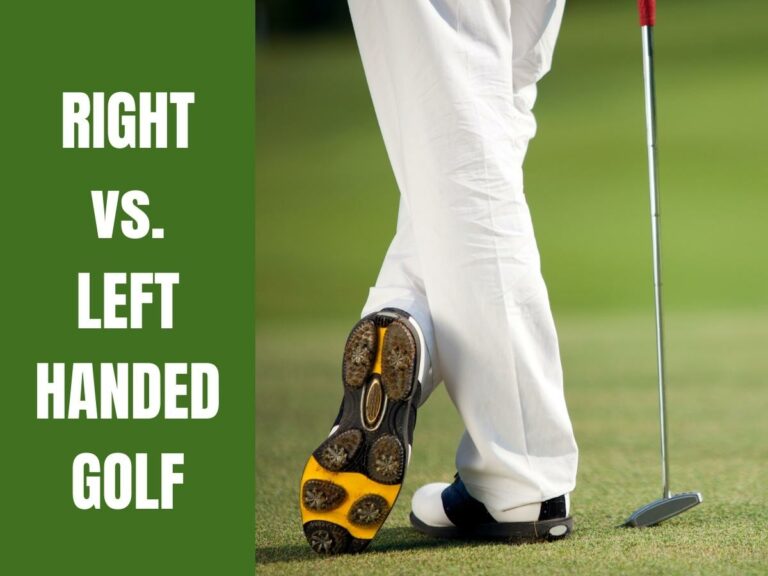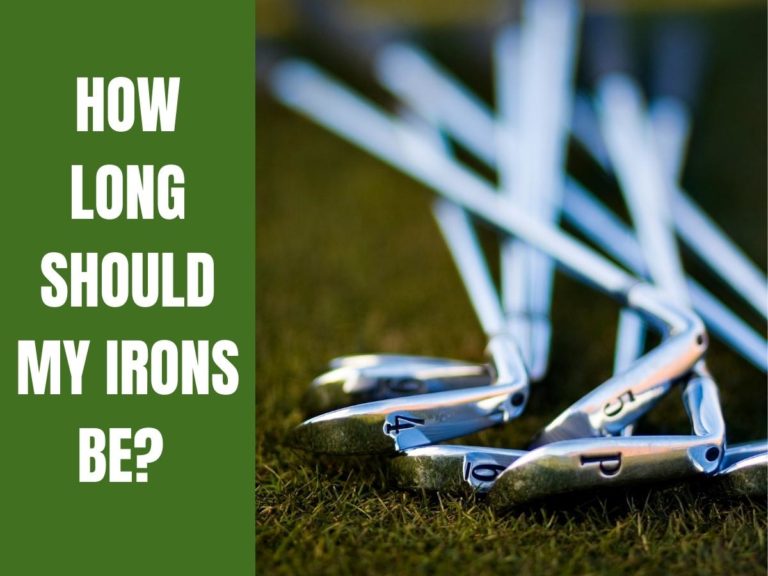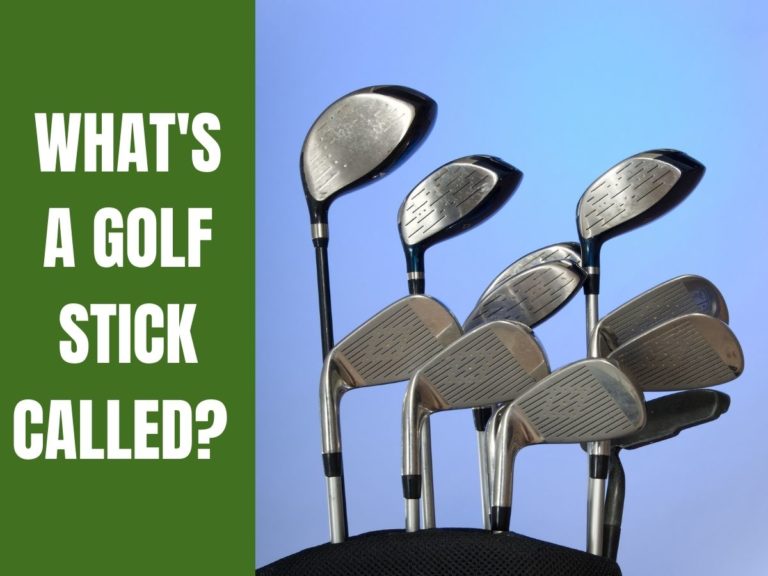Wood vs. Hybrid: What’s The Difference?
Woods and irons have been a part of the golf game for many years. However, in the more recent part of golfing history, a new innovative type of club known as a hybrid has been developed. To any amateur golfer, most clubs might seem quite similar to one another. However, there are many significant differences between hybrid clubs and woods.
The differences between hybrids and woods are that hybrids have a flatter face, a shorter and heavier shaft, a very dense club head, and a lower center of gravity than woods. Hybrids are used to hit balls in rougher lies and need a different stance and swinging technique than woods.
Hybrid golf clubs have been developed as an innovative means to combine the most vital attributes of both woods and irons. They are also known as a rescue club by some manufacturers and players.
Rescue clubs are designed by combining the characteristics of a wood’s extremely deep heads with smaller-sized faces of an iron.
Let’s explore further the difference between a wood and a hybrid.
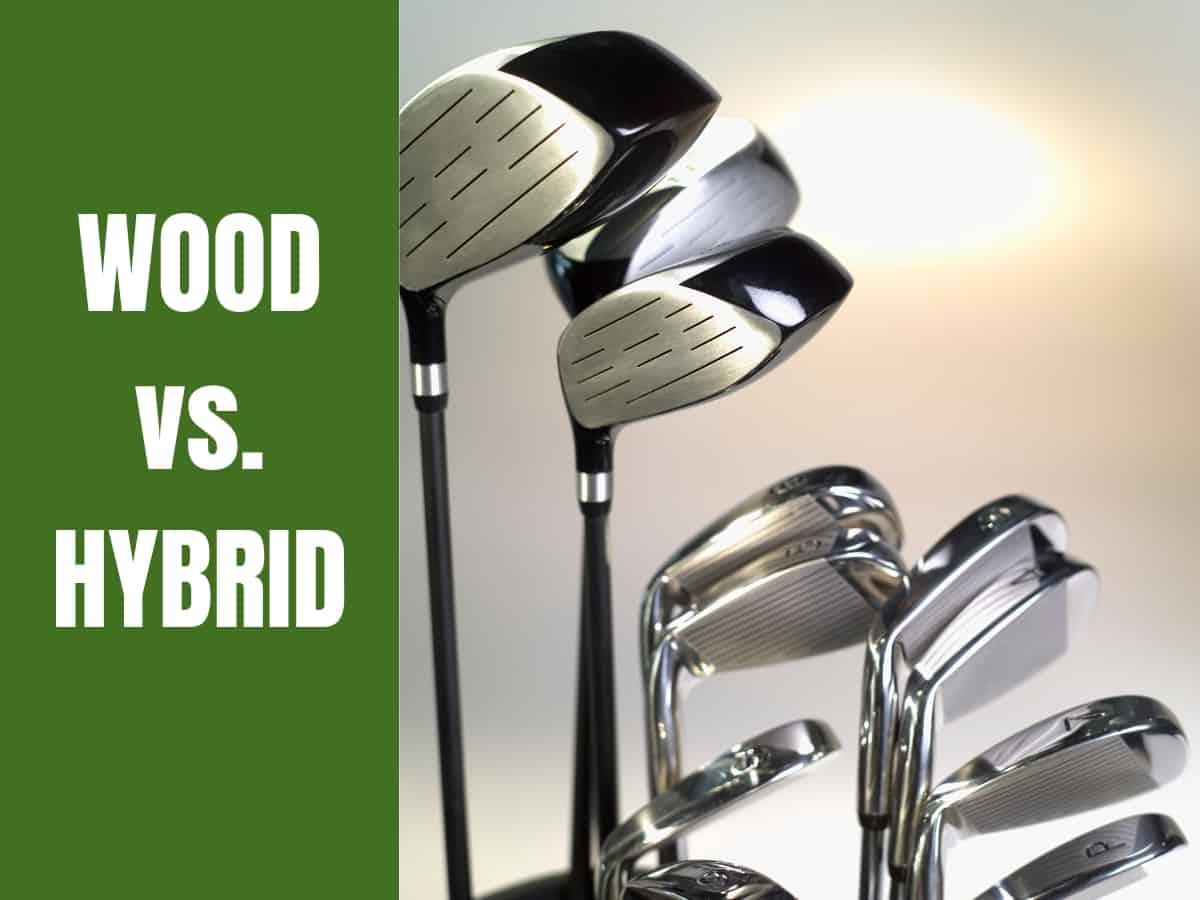
The Differences Between Wood And Hybrid Clubs
One of the significant things that set hybrids and woods apart is the physical differences between the two. These two types of clubs differ regarding the shape and size of the club head, the construction of the shaft, and what hosel they have.
Fairway woods and hybrids differ in how the club has been designed and in the club’s capabilities in hitting a golf ball.
The Design Of Woods
Woods are designed with a broader soul, nearly twice as large as any comparable hybrid. Woods also tend to have a more curved face than hybrids and have a much bigger club face.
The design of the club head is also more spherical and bulging than the hybrid’s – and woods tend to have a much longer and lighter shaft than that of a hybrid club and no hosel.
The Design Of Hybrids
Hybrids are designed with a dense club head that is slightly convex and has a deeper and lower center of gravity than fairway woods. Hybrids also have a much smaller face than fairway woods but have similar club head depths to that of woods.
A hybrid typically also has a much flatter face than that of woods, and the shaft of a hybrid club is flexible and has a very thick hosel.
The club head of a hybrid is relatively small, much like an iron. It is designed in this way so that the head of the club doesn’t get caught up in the rough when hitting a ball out of a rough lie.
However, the head of the hybrid is still a bit larger than an iron to reduce the risk of the club turning its face when hitting a ball out of the rough.
The Performance Of Woods
Woods tend to be much harder to hit than a hybrid club, and it is much less forgiving when it comes to swinging errors by the player. This generally makes woods slightly more challenging for the average golfer to use as opposed to using hybrids instead.
The Performance Of Hybrids
Hybrids are usually much easier to hit and much more forgiving when it comes to mishits and swinging errors by the player, allowing the ball to travel in a much straighter path than it would have if it have been hit with a wood.
The design of hybrids allows them to make use of more advanced back weighting techniques to deliver shots with greater distances and accuracy, much like that of woods.
However, the design of a hybrid also incorporates a flat face like that of an iron that makes it easier to stop the ball on the green by creating a backspin.
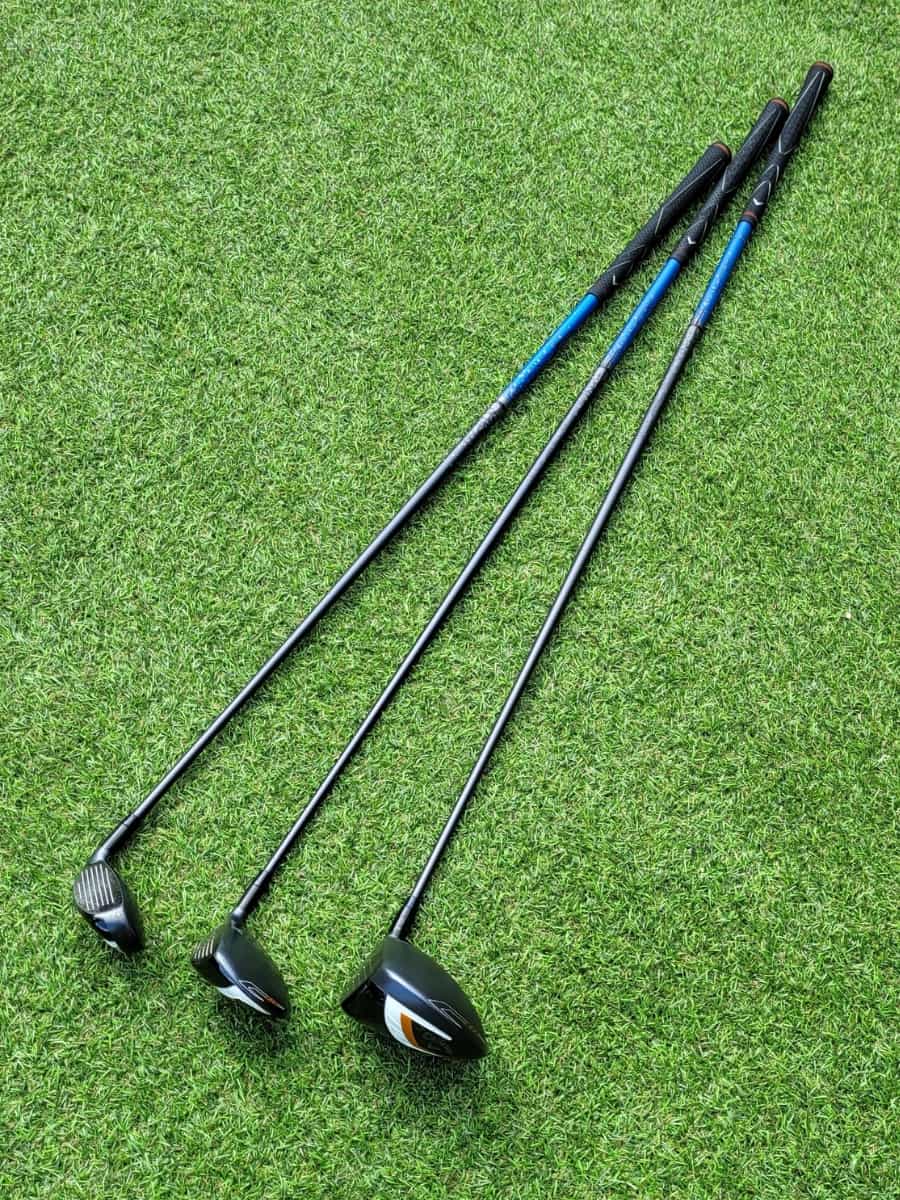
Hitting Distance Of Hybrids vs. Woods
The distance a ball can travel when hit with a hybrid is similar to that of the corresponding iron rather than that of a corresponding wood. However, woods generally allow the ball to travel further than irons. Therefore, hybrids have a slightly shorter hitting distance than woods.
A golfer can typically hit the ball slightly further with a hybrid than with an iron because the golfer usually makes better contact when hitting the ball with a hybrid than they would using an iron.
However, although a hybrid can hit further than an iron, it is typically not able to hit a ball further than the corresponding wood.
Difference In Stance When Using Hybrids vs. Woods
Woods tend to have much longer club shafts than hybrids; therefore, golfers must set themselves up slightly further away from the golf ball when using woods. Due to hybrids having a shorter club shaft than woods, golfers should set themselves up a bit closer to the golf ball before playing a shot.
Difference In Swing Techniques Using Hybrids vs. Woods
One of the most significant differences between hybrids and woods is the technique used to hit the ball when using the two different types of clubs.
When using woods to play a ball lying on a fairway, a golfer should place the ball more forward in their stance. This would usually mean that a right-handed golfer would generally place the ball in a position around 3 inches inside their left heel when setting their stance.
In addition, the golfer should take a level swing, ensuring that the club head is parallel to the ground when striking the golf ball.
When using a hybrid to play a ball lying on a fairway, a golfer should place the ball slightly more toward the middle of their stance. In addition, the golfer should have a much steeper swing as they hit down on the ball and usually leave a divot just past the place where the ball was sitting.

Advantages Of Using Hybrid Clubs Over Woods
Hybrid golf clubs have the advantage over woods when it comes to a ball lying in a position where using a wood might not perform as well as a hybrid. This is because a hybrid might be able to hit a ball and perform better in a lie much rougher than what a wood might handle.
Final Thoughts
Hybrid clubs are designed to be a combination of the best attributes between both woods and irons. The main differences which set hybrids apart from woods are physical differences, differences in stance and swing techniques, and differences in design and the way that they perform.
Hybrids have shorter shafts than woods and slightly convex, more dense club heads than woods. The club face used for hybrids is also much flatter than woods.
Combining all these attributes makes hybrids more helpful in playing balls that lie in rough patches of terrain and are much more forgiving than woods when the player mishits the ball. As an amateur, I love my hybrid. It has saved me shots in almost every round I play.
But it must be noted that many professionals do not carry a hybrid in their bag. They consider that it is surplus to their requirements. Their exceptional skill levels allow them to escape any trouble they find on the course with just a standard complement of woods and irons.


